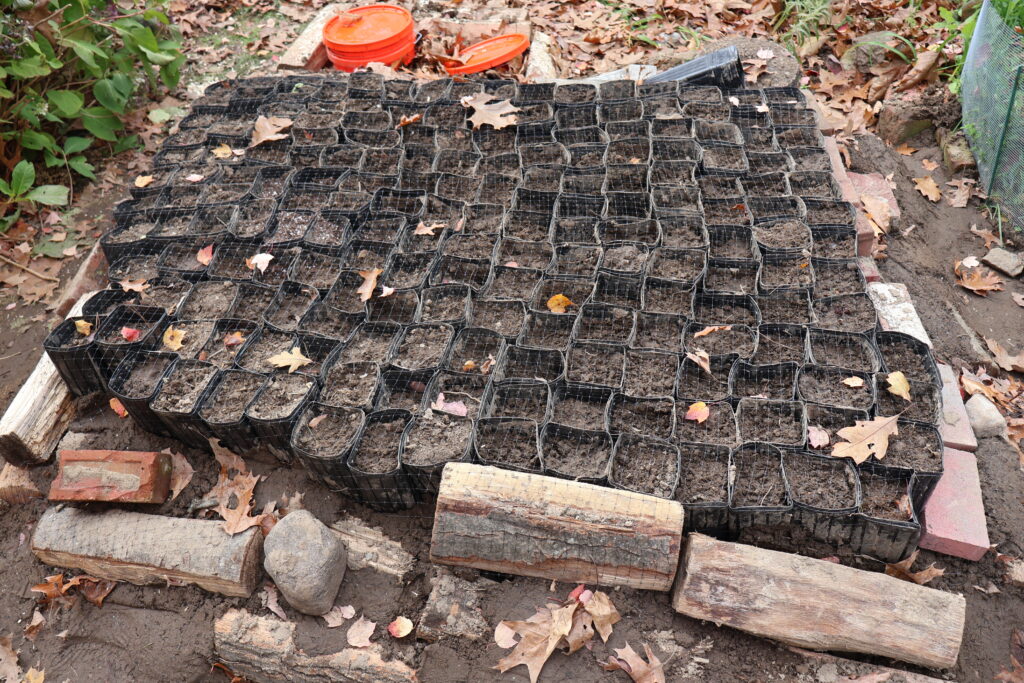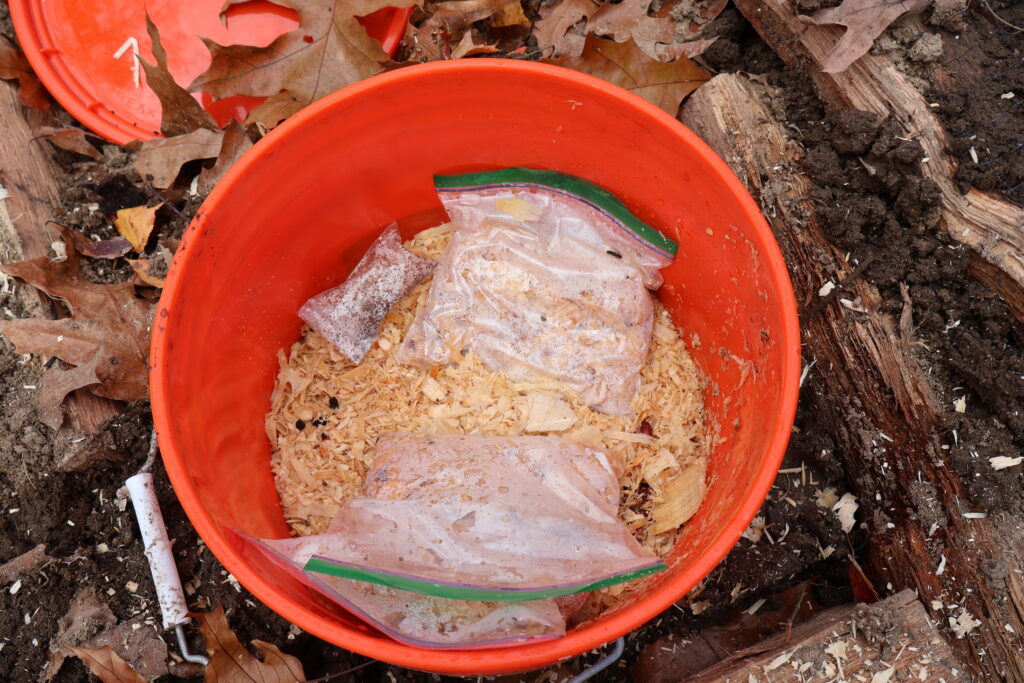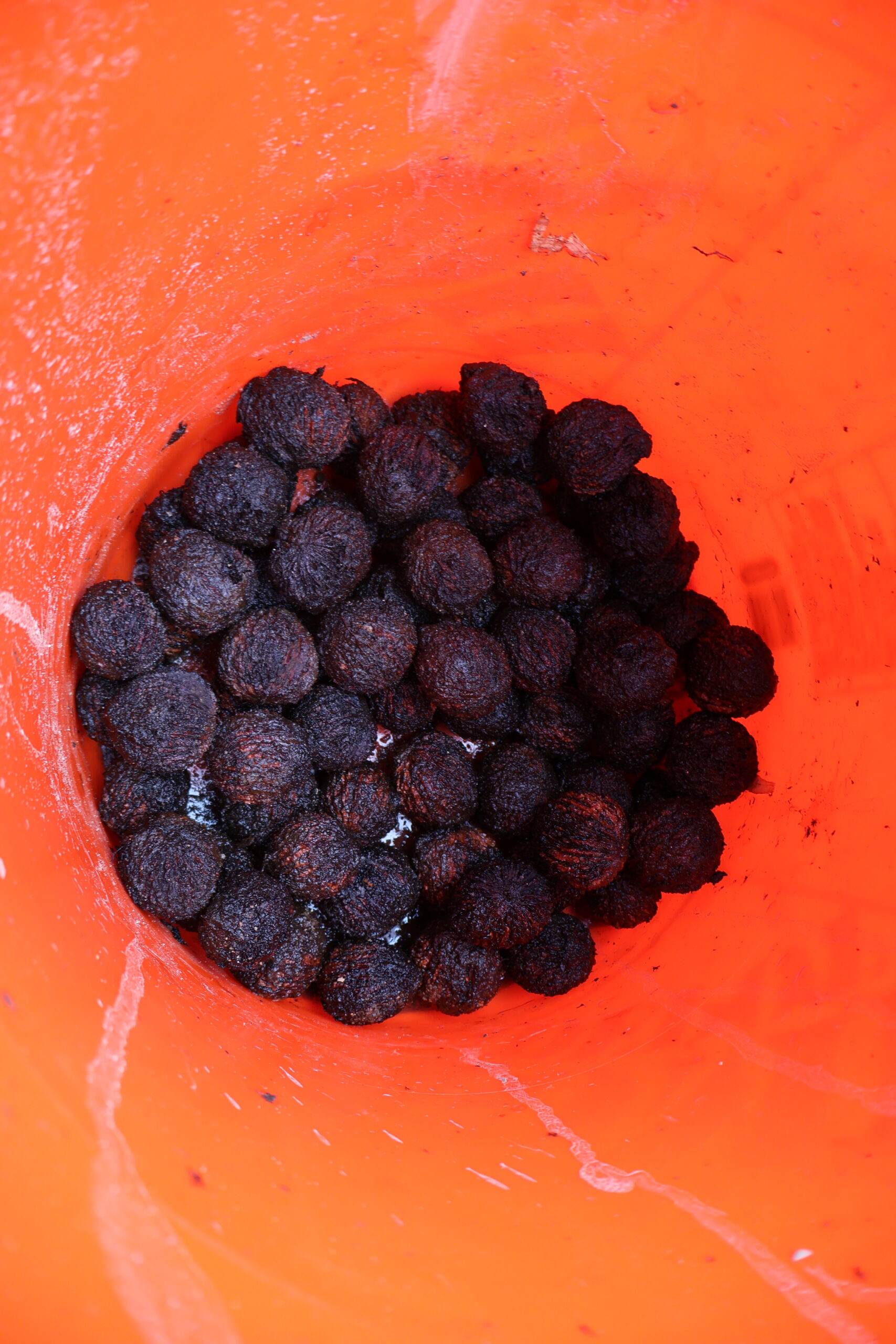I am growing 420 trees this year. The number is a coincidence, I bought pots – that I plan to reuse for the rest of my life – from here where they sell 210 pots per case. Im actually growing more than this, as I plan to try some bare root sapling beds. When I walk my dog in the fall, I observe nice trees in the area and collect seeds. I have collected black cherry, white oak, red oak, paper birch, black walnut, sycamore, dogwood, hickory, and some unknown seeds from the meadows. Local genetics are the best in my opinion. It is sad that New England has already lost the elm tree, chestnut tree, ash tree, and soon this stupid nematode could kill a lot of beech trees. I wonder what our forests use to look like.
Many plant seeds around the world express forms of seed dormancy – that is to prevent germination until the conditions are right. In their natural habitat, they have reasons for this dormancy, and ways to overcome it. Many native plants in New England often break their dormancy through the cold winter months. All of my tree seeds, except white oak, require this cold damp cold environment for several months (aka cold stratification). I am using 5 gallon buckets and wood shavings as my germination chamber. I have buried this somewhat into the ground. In the spring, I will put the germinated seeds into tree pots. I am using native sandy loam soil, but will fertilize with an NPK 10-10-10 in spring. I will also inoculate the pots with compost tea made from some local park soil, leaf mold, compost, etc. I know, synthetic fertilizer made with natural gas makes me sad, but I think the benefits outweighs the evil here? Maybe not? I regret buying the bag of synthetic fertilizer to be honest.



Thank you for reading to here. On a serious note, human caused climate change will most likely lead to mass tree extinction. Trees and coral reefs have long lifecycles and are slow to adapt (good paper here). Humans have really messed up the small water cycle, biotic pump, and other natural ecological processes that retain water on land. In the Colorado River basin this is apparent – everyone is forced to admit humans messed that up. Now the states will probably fight over the water rights instead of fixing the issue – fossil fuels and ecosystem destruction. This year the low Mississippi River water has disrupted many shipping barges. Now, in Massachusetts we were in a critical drought most of the summer. If you are aware, you can see this in the trees. Their health is declining, they are more susceptible to disease/insects/nematodes. Most people are not aware. The stories from people out west are already pretty crazy – lets not have this happen to New England! I urge people to consider this on their property.
Tim Brodribb has been measuring all the different ways global warming kills trees for the past 20 years. With a microphone, he says, you can hear them take their last labored breaths. During blistering heat waves and droughts, air bubbles invade their delicate, watery veins, cracking them open with an audible pop. And special cameras can film the moment their drying leaves split open in a lightning bolt pattern, disrupting photosynthesis.
“We really need to be able to hear these poor trees scream. These are living things that are suffering. We need to listen to them,” said Brodribb, a plant physiologist at the University of Tasmania who led a recent study that helps identify exactly when, where and how trees succumb to heat and dryness.
The study, published April 17 in the journal Science, reviewed the last 10 years of research on tree mortality, concluding that forests are in big trouble if global warming continues at the present pace. Most trees alive today won’t be able to survive in the climate expected in 40 years, Brodribb said. The negative impacts of warming and drying are already outpacing the fertilization benefits of increased carbon dioxide.
Inside Climate News
These 420 trees will help, but it is negligible, basically doing nothing. I am doing this to educate myself, involve myself in the community more, help with the tree age bias in town, grow free trees, help with home heating/cooling costs, help with local air pollution, plus supporting native insects, birds, and other wildlife. It is amazing how much we really depend on trees.
Interesting post. Makes you think! I like how you talked about the coral reefs and trees.
❣️this idea of growing 420 beautiful trees 🪴in your Longmeadow garden.
Are you aware of the Tree Committee in town? You should join it if possible!
I have briefly heard of them, but town bureaucracy does not always align with my goals.